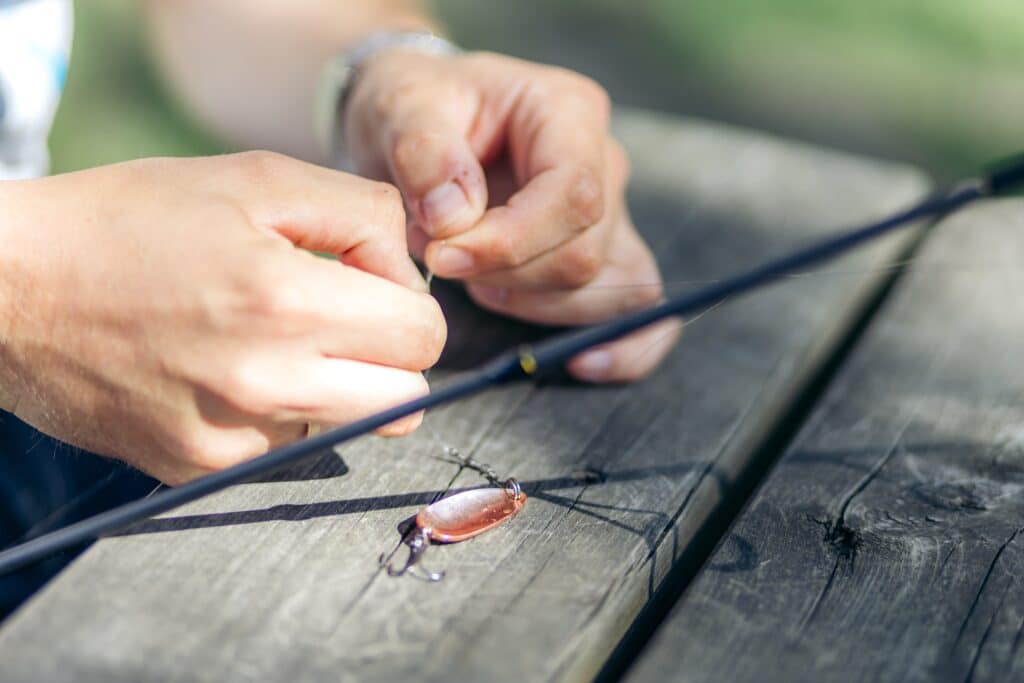
Fishing is a popular relaxing pastime that can go from awesome to awful quickly. Those fishing hooks are not only sharp but barbed as well. Once they enter the skin they can be tricky to remove. Fortunately, most fish hook injuries are not life-threatening or debilitating unless they involve the eye or penetrate an artery.
A young patient of mine decided that he and his friend were going to take advantage of the beautiful spring weather and take up the sport of fishing. They even rented a boat. Sitting in the little fishing boat on opposite sides they began to cast their baited hooks. In the process of back-swinging the rod, one of the fishermen caught his hook through his buddy’s ear. He presented to the ER with a red and white spoon hook hanging from his right ear.
After some reassurance the patient allowed me to remove the hook. After prepping the area. I cut the hook with some wire cutters and pushed the barbed end through with a needle driver. I made sure his tetanus immunization status was up to date. The wound was dressed and the patient was sent home with some antibiotics. Both young men indicated they would be more careful after this incident.
It seems the general public often doesn’t consider potential consequences like in this case, sitting directly behind someone casting. This makes sense – if you have never seen a chainsaw cut through a branch then into a leg, or a nail gun shoot through a board into a knee, or needle nose pliers penetrate an eye while pulling on wire, you might not think of it. Or how about recreational activities like skateboarding or rollerblading without any protective gear? I cringe to think of how all that exposed skin will be abraded if they fall, not to mention the broken bones and head injuries, because I have seen it.
Through experience dealing with all kinds of injuries, anyone who has worked in an ER or on an EMS service tends to consider the hazards of any activity they undertake. They take steps to manage risk. In fact, it is part of EMS culture to do so. We look at the situation and think, what could go wrong?
After all, we can’t help others if we don’t ensure our own safety.

